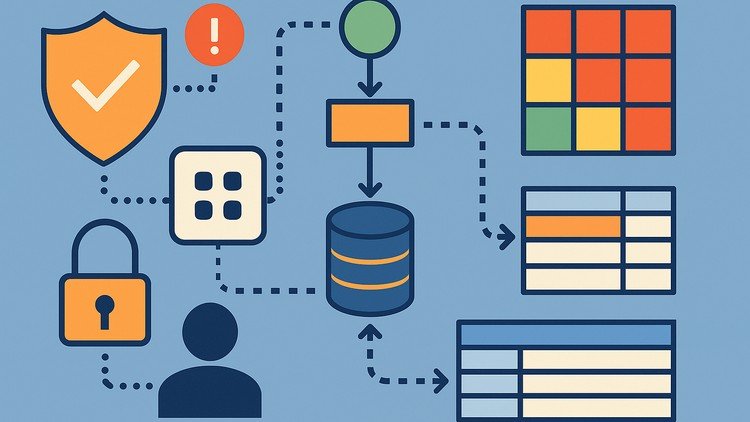In a world where cybersecurity threats loom large, understanding how to effectively model these threats is crucial for developers, security analysts, and anyone involved in software development. The "STRIDE: Threat Modeling Step by Step" course on Udemy offers a practical and insightful journey into the STRIDE methodology, providing learners with the tools and knowledge necessary to identify and mitigate security risks effectively.
What you’ll learn
This course takes a hands-on approach to threat modeling using the STRIDE framework, which stands for Spoofing, Tampering, Repudiation, Information Disclosure, Denial of Service, and Elevation of Privileges. By the end of the course, you will have gained:
- In-depth Knowledge of STRIDE: Understand each component of the STRIDE methodology and how they apply to software design and architecture.
- Practical Threat Modeling Skills: Learn to identify and categorize potential threats to an application, enabling you to devise strategies for prevention and mitigation.
- Risk Assessment Techniques: Develop the skills to prioritize threats based on their potential impact and likelihood, equipping you to make informed security decisions.
- Use of Modeling Tools: Get familiar with various tools and frameworks that support threat modeling, facilitating a more structured approach to security.
- Real-World Application: Through case studies and practical exercises, you’ll learn how to apply threat modeling in real-life scenarios, making the concepts tangible and applicable.
Requirements and course approach
The course is designed for individuals with a basic understanding of software development concepts. While prior experience in security is beneficial, it is not a prerequisite. The course follows a structured approach, combining theoretical knowledge with hands-on exercises to ensure that learners can effectively apply what they learn. Key elements include:
- Video Lectures: Engaging video content that breaks down complex concepts into manageable segments.
- Quizzes and Assignments: Regular assessments to ensure comprehension and retention of material covered.
- Practical Examples: Case studies that highlight real-world applications of threat modeling concepts, making the learning process relevant and insightful.
Who this course is for
This course is perfect for:
- Software Developers: Those looking to integrate security into their development processes.
- Security Analysts: Professionals who need to assess and manage security risks within applications.
- Project Managers: Individuals responsible for overseeing projects that involve sensitive data or operations.
- IT Professionals: Anyone interested in gaining a foundational understanding of threat modeling and its importance in the software lifecycle.
Whether you are a beginner looking to enhance your skills or an intermediate learner seeking a more structured approach to security, this course caters to various experience levels.
Outcomes and final thoughts
Completing the "STRIDE: Threat Modeling Step by Step" course equips you with valuable skills that can significantly enhance your competency in security practices. The STRIDE framework offers a clear and practical method for identifying and addressing potential threats, making it an invaluable asset in today’s security-conscious environment.
The course’s structured format, combined with practical exercises and real-world applications, ensures that learners not only grasp the theoretical aspects of threat modeling but also know how to implement these strategies effectively in their projects.
Overall, this course is an excellent investment for anyone interested in bolstering their cybersecurity knowledge and skills. With its clear explanations and applicable lessons, "STRIDE: Threat Modeling Step by Step" is a must for those looking to thrive in the ever-evolving field of cybersecurity.




